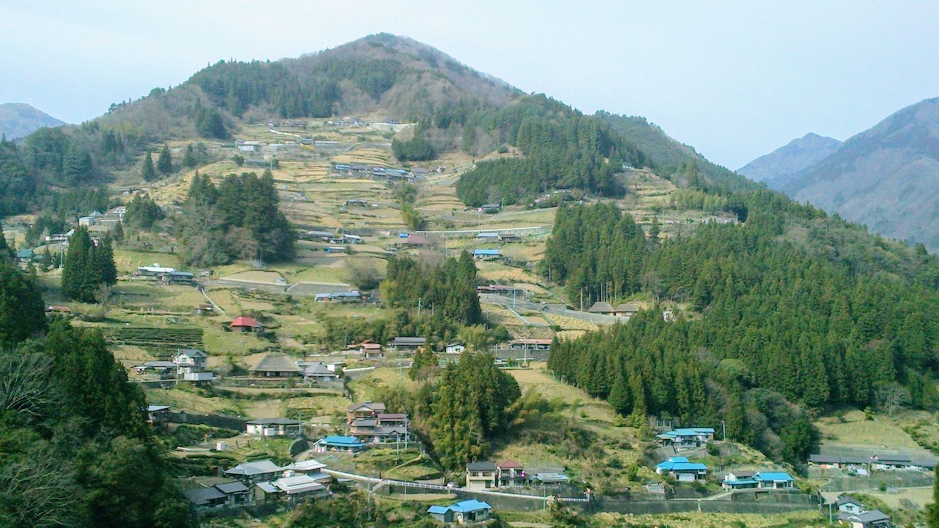NEWS
- TOP
- Mountain Hamlet in the Sky with a Thousand Years of History
Mountain Hamlet in the Sky with a Thousand Years of History

Nestled near Mount Tsurugi, this high altitude village is close to the mountain ridge, and it is dotted with houses and fields on sloping ground.
These places are called “soranosato,” which means town in the sky.
The people here are grateful for the natural splendor they are blessed with, and they have lived in these mountains for over a thousand years by working together to help each other.
Even today some of the legendary Heike Ochudo sites remain.
Ochiai Village is a located right in the middle of Higashiiya, and it resides on a mountain slope near the point where the Iya River and Ochiai River come together.
Because of the steep slope, the elevation differs by about 390 meters at different points within the village!
In this harsh environment terraced fields cannot be made, so the people have passed down their own methods for plowing and farming the steep slope as it is.

In the fall the harvested “susuki” (grass) is piled into a large cone shaped “koeguro,” which is spread between the rows of planted crops to keep the soil from spilling out. In the spring it is used as fertilizer. This cyclical farming method can be seen as a symbol of coexistence with nature, and on March 9th, 2018 it was recognized as a Globally Important Agricultural Heritage System (GIAHS).
Surviving since the middle of the Edo era or the early Showa era, the houses with straw thatched roofs and the stone walls that were built stone by stone to encircle the fields are just some of the spectacles that harken back to a mountain village of olden times.
In 2005 it was recognized as part of the Important Preservation Districts for Groups of Traditional Buildings.
The “koune” is a house from the Tempo era (1830 – 1844), and the framing methods developed in the Iya region give this small house a very distinct look. It has been recognized by Japan as an important cultural asset.
Source:景観動画
Some of its unique characteristics are the “niwa” (garden) and “omote” (front) combining to form a “hitomadori” (one room plan), the mud walls being protected by a type of split bamboo called “hishagitake” that covers the outer walls, and the restroom sticking out in the center of the front side.
In August of 1983 it was taken from its former location in Kurishito Village in Kyuu-Higashiiyayamason and rebuilt in Sugeoi Village in Higashiiya where it stands today.
